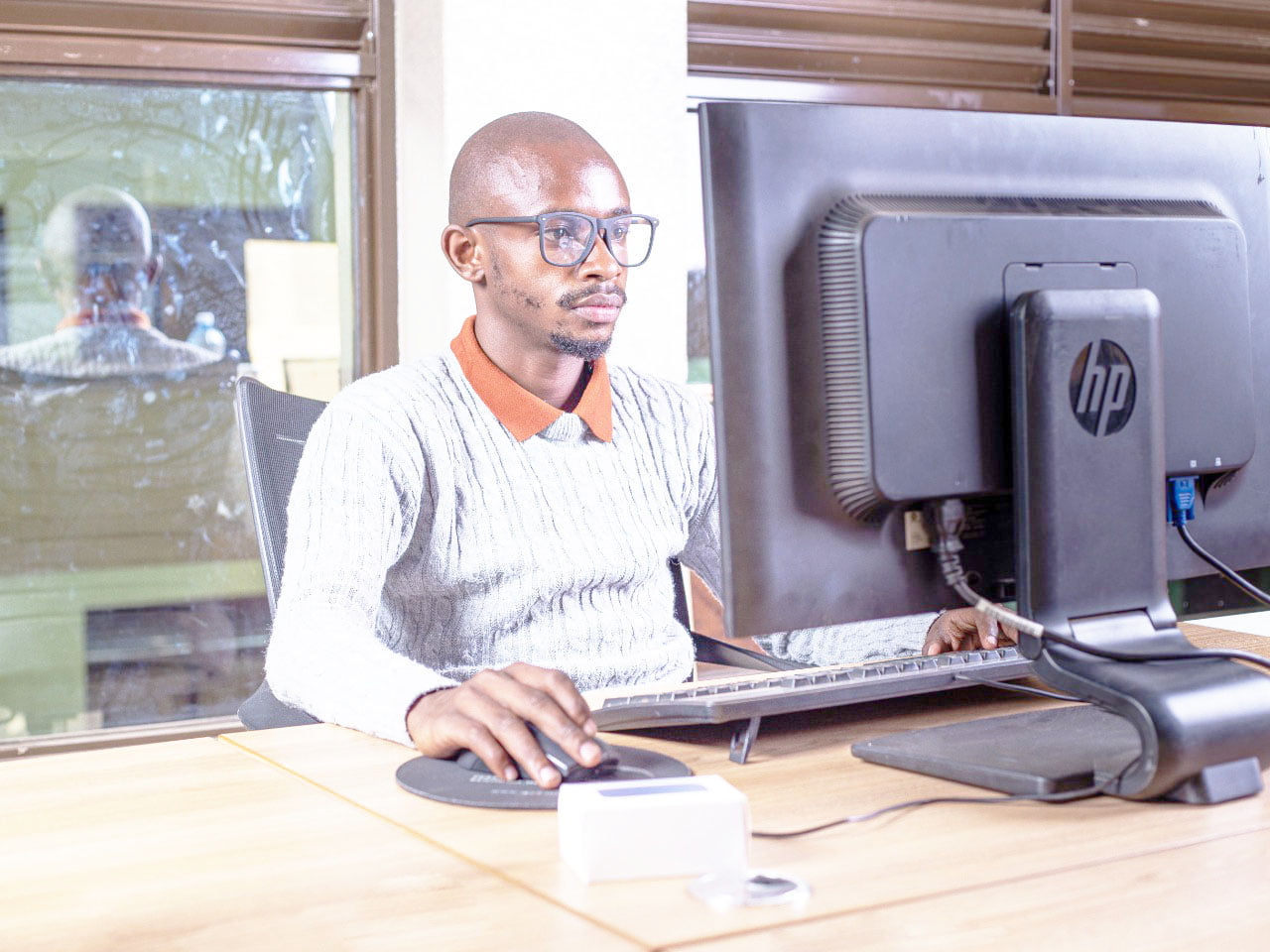By Andrew Walyaula
waliaulaandrew0@gmail.com
Unprecedented changes in human lives and behavior were experienced at the onset of Covid-19. Some of the norms are still being adhered to even as the world is recovering from the pandemic.
Individuals had to embrace technology to run their daily activities. Many people capitalized on using laptops, smartphones, tablets and other digital gadgets to hold meetings and study among other things.
The remarkable increase in students using electronics has become an indispensable part of their daily lives, causing a surge in screen time.
Nektuma Brian, a student at the University of Nairobi, suffers from computer eye strain.
“Laptops and smartphones are basic requirements when joining a university. This implies that it is difficult to avoid using them,” Brian says.
He said that studying hard-to-grind courses like medicine requires students to go through notes and conduct thorough research, which involves the gadgets.
“It is impossible to avoid spending a lot of time on electronic gadgets when revising for main exams. I never practiced simple precautions to keep my eyes healthy and am now a victim of computer strain,’ he regretfully says.
Brian Msee, a student who owns Suemi Media Consultancy, says that his work involves graphic design, photo editing, video editing and social media handling. These tasks require him to spend a lot of time on the screen.
“I spend 75 percent of the day on computers. I have been experiencing eye problems and even severe headache. I had to get antiglare glasses,” Msee says.
He notes that many people do not know how to keep their eyes healthy while using computers and insists that awareness should be created about computer eye strain since the usage of digital gadgets is very high.
‘It is important to raise awareness in this digital era so as to save the sights of many.’ Msee opines.
Samuel Osoro, an optician, warns that spending much time on screens poses a threat to the eyes.
He notes that a person experiences Computer Vision Syndrome (CVS), which is also known as digital eye strain, when a lot of time is spent on computers without taking precautions. “This can contribute to eye dryness, mostly felt when a person feels the eyes are tired.” He says.
A normal person should blink 12-14 times a minute but this might not be the case if someone looks at the screen as the blinking slows down.
‘When blinking is slow, the eyes dry and the condition tends to worsen if the room contains low humidity due to the presence of air conditioners,’ Dr. Osoro says
Blinking is a natural reflex that keeps the eyes moist. Reduced blinking to 6-8 times per minute results to dry eyes, which is a cause for computer vision syndrome.
Dr Osoro reveals that an individual experiences the following symptoms if suffering from digital eye strain: Tired eyes, redness, gritty sensation, blurred or double vision and eye fatigue.
“Migraines and tension headaches also go hand in hand with computer vision syndrome. It’s noteworthy that individuals who are very sensitive to blue light will experience severe headaches,’ he says.
Scientifically, looking at a near target for a long period causes the eye to accommodate, using muscles inside the eye to try and focus. Accommodative eyes cause blurry or unfocused vision.
Dr. Osoro says that in the past two months, he has received more than twice the number of patients he usually receives. He reveals that majority of his patients are students.
According to the American Academy of Optometry, any person who exceeds two hours of computer use a day is at risk of computer vision syndrome. Around 60 million people globally are affected by (CVS).
Dr. Osoro proposes that while using digital visuals, it is vital to take frequent breaks. The 20-20-20 rule applies best. After 20 minutes, an individual should take a break of 20 seconds to pay attention to something else 20 feet away.
He insists that one should remember to blink while using the gadgets. Blinking moistens the eye hence reduces irritation.
‘People should use antiglare glasses, which can filter blue light, usually emitted by digital devices. ‘Dr. Osoro advises.
He also stressed on the need to create awareness on the same.
George Nyakundi, an ICT lecturer at Laikipia University suggests that proper cleaning is fundamental as far as the safety of the eyes is concerned.
“A lot of dirt causes some parts of the computer to display more light than required. Many gadgets have settings that allow them to regulate the amount of brightness, color and contrast to be displayed. It is therefore vital for a person to regulate the light as per the contention. When using a computer for a long time, one should also adjust the ambient light to half bright. Take breaks and stretch the neck, move legs and arms.’ He said.






